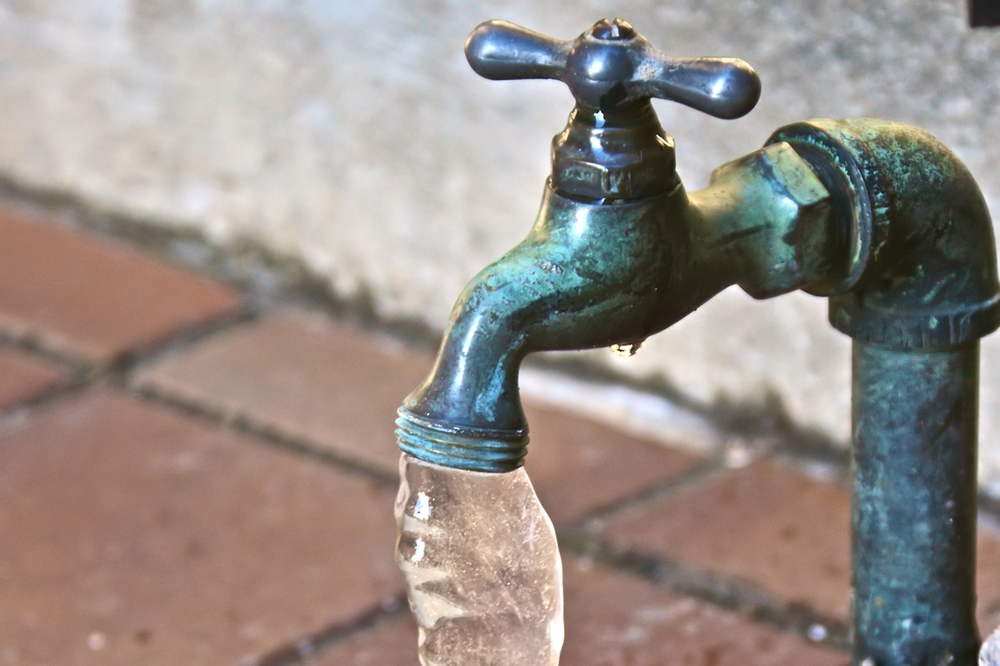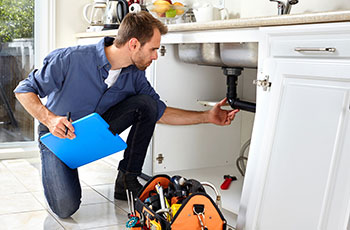Getting the Essentials of Home Plumbing: A Beginner's Handbook
Getting the Essentials of Home Plumbing: A Beginner's Handbook
Blog Article
They are making a number of great annotation on the subject of Plumbing basics: How your home plumbing works in general in this content on the next paragraphs.

Plumbing is an essential aspect of any home, in charge of providing clean water for drinking, cooking, and bathing, in addition to eliminating wastewater safely. Comprehending the basics of home plumbing is essential for every home owner to ensure correct upkeep, troubleshooting, and, if needed, repair work. In this beginner's overview, we'll cover the fundamental concepts of home plumbing to aid you end up being much more familiar with exactly how it works.
Water Furnace
The water heating system is accountable for heating water for domestic use, including showering, cooking, and cleansing. Common sorts of water heaters include tank-type hot water heater, tankless (on-demand) hot water heater, and heatpump hot water heater. The water heater is linked to the water supply system and delivers hot water to plumbing fixtures as needed.
Drain System
The water drainage system eliminates wastewater from your home and brings it away to a sewer therapy facility or septic system. It contains a network of pipes, fittings, and fixtures that transport wastewater from plumbing fixtures to the major sewage system line or septic system. Proper drain is important to protect against obstructions, back-ups, and sewer leakages.
Air flow System
The air flow system helps maintain correct atmospheric pressure and stop sewer gases from entering your home. Air vent pipelines, additionally referred to as vent stacks, expand from plumbing fixtures to the roof, permitting drain gases to escape securely outside. Air flow pipelines likewise permit air to go into the drainage system, assisting in smooth wastewater circulation and preventing suction or vacuum results.
Water System System
The water system system brings tidy water into your home from a metropolitan water resource or an exclusive well. It consists of a main water line that attaches to your home's plumbing system, normally situated underground. A water meter measures the amount of water taken in, while a shut-off valve allows you to manage the circulation of water into your home.
Plumbing Fixtures
Plumbing fixtures are devices that provide water to numerous parts of your home and include sinks, taps, toilets, showers, tubs, and home appliances such as dishwashers and cleaning makers. Each fixture is connected to the water system system through pipelines and fittings and might have its shut-off valve for upkeep or emergency situations.
Common Plumbing Tools
Having the right tools available is crucial for doing standard plumbing repair services and upkeep jobs. Typical plumbing devices include flexible wrenches, pipe wrenches, pliers, pipe cutters, hacksaws, bettors, augers (or drainpipe snakes), and Teflon tape. Having these tools easily offered can aid you tackle minor plumbing concerns efficiently.
Fundamental Plumbing Repairs
While some plumbing repair work might require professional aid, many common issues can be addressed with basic DIY techniques. Understanding exactly how to take care of a leaking tap, unclog a drainpipe, change a bathroom flapper, or fix a leaking showerhead can conserve you time and money on plumbing repair services.
Conclusion
Understanding the basics of home plumbing is vital for every house owner to keep a secure, practical, and efficient plumbing system. By acquainting yourself with the water system system, plumbing components, drain system, ventilation system, common plumbing devices, and fundamental repair services, you can confidently deal with minor plumbing concerns and ensure your home's plumbing system operates smoothly.
Plumbing for Beginners: A Comprehensive Guide
If you’re a beginner when it comes to plumbing, don’t worry; you’re not alone. Plumbing may seem intimidating, but with the right knowledge and a little practice, you can handle many common plumbing issues on your own. In this comprehensive guide, we will demystify the world of plumbing for beginners, providing you with the basic knowledge and skills needed to tackle common plumbing problems and even take on some DIY plumbing projects.
The Importance of Basic Plumbing Knowledge for Beginners:
First and foremost, basic plumbing knowledge gives you a solid foundation. It helps you grasp the key concepts and terminology that are essential in this field. By learning the basics, you’ll be able to build upon that knowledge and tackle more complex plumbing tasks in the future.
Having a basic understanding of plumbing also enables you to handle common issues that may arise in your home. Picture this: a leaky faucet or a clogged drain. With some basic plumbing knowledge, you’ll have the confidence to troubleshoot and fix these problems on your own. It saves you from unnecessary expenses and the hassle of waiting for a professional to arrive.
As a beginner, learning the basics of plumbing empowers you to take care of your own home. It gives you a sense of independence and self-reliance. You’ll no longer have to rely solely on professionals for every small issue that pops up. Instead, you can handle many tasks yourself, saving time and money in the process.
Remember, everyone starts as a beginner. Embrace the learning process and take small steps to expand your plumbing knowledge. There are plenty of online resources, tutorials, and even local workshops that talk about plumbing for beginners.
Essential Tools for Plumbing for Beginners
As you start your plumbing journey, having the right tools in your toolbox is crucial. Let’s explore some of the must-have tools:
Adjustable Wrench:
This versatile tool is a staple in any plumber’s toolbox. It allows you to tighten or loosen nuts and bolts of various sizes. Make sure to have an adjustable wrench with a comfortable grip.
Pipe Wrench:
A pipe wrench is specifically designed for gripping and turning pipes. It has serrated jaws that provide a strong grip, making it easier to loosen or tighten threaded pipes and fittings.
Plunger:
The plunger is a simple yet effective tool for clearing clogged drains and toilets. It creates suction when you push and pull, helping to dislodge blockages. Keep a good-quality plunger handy for those unexpected clogs.
Pipe Cutter:
When it comes to cutting pipes, a pipe cutter is your go-to tool. It creates clean, precise cuts without damaging the pipe. Look for a pipe cutter that can handle the pipe sizes you’re working with.
Hacksaw:
A hacksaw is useful for cutting through pipes, screws, and other materials. It’s a versatile tool that can handle different cutting tasks. Remember to use a blade suitable for cutting metal.
Tape Measure:
Accurate measurements are crucial in plumbing. A tape measure allows you to measure pipe lengths, distances, and dimensions accurately. Opt for a sturdy tape measure that extends a good length.
Pliers:
Pliers come in handy for various tasks, such as gripping, bending, and cutting. Slip-joint pliers with adjustable jaws are great for gripping pipes, nuts, and bolts.

I'm certainly very fascinated with How Does the Plumbing Work in Your Home? and I am praying you enjoyed reading the entire blog entry. Sharing is caring. Helping people is fun. We appreciate reading our article about Plumbing Basics For Every Home: The HomeTriangle Guide.
Call Report this page